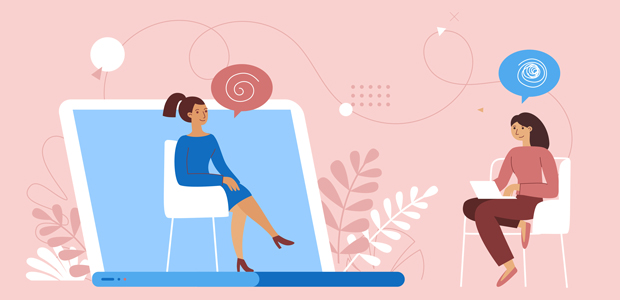
The impact of ADHD on women in the workplace
Attention-Deficit Hyperactivity Disorder, often referred to as ADHD, is a condition that affects behaviour, it can lead to a lack of concentration, hyperactivity, restlessness, and impulsive actions. ADHD is commonly identified in childhood, especially at times of transition when symptoms can become more noticeable, such as the start of a new school.
The disorder is the result of atypical brain development and there is no single cause for why someone’s brain might have the unique features that are linked to ADHD. However, one thing that has a big impact on how a person’s brain develops is their genes. There is a strong genetic basis for ADHD, which overlaps with conditions such as autism and dyslexia.
ADHD can impact many areas of life including work, daily activities, social and family relationships and psychological and physical well-being. Approximately one in 20 children and adolescents across Europe are affected by ADHD, with most cases persisting into adulthood. Prior to 1990, it was believed that children outgrow ADHD in adolescence as hyperactivity tends to lessen as the young person matures. It is now known, however, that many symptoms continue into adulthood and hyperactivity is usually experienced as internal restlessness.
The Mental Health and Young People Survey in 2021, showed an increase since 2017 from one in nine to one in six children aged between five and sixteen having a probable mental health disorder, with young girls and those with pre-existing mental health issues typically experiencing more negative impacts, as a result of the pandemic. ADHD can be extremely difficult to diagnose. Unless it is causing significant problems in at least two major areas of your life, even if you do have symptoms, you don’t qualify for a diagnosis because they’re not causing you obvious impairment.
ADHD symptoms can change and develop throughout a person’s life, especially at work, and hyperactivity could evolve into inner restlessness. Those battling ADHD also struggle with concentration, which can impact on productivity in the workplace, without appropriate treatment.
The underdiagnosis of ADHD in females
There are many factors that can be attributed to the underdiagnosis of ADHD in females, primarily the differing way ADHD can present in females compared to males. A strong perception still exists that ADHD is more common in males, and here lies an issue that could see females miss out on necessary attention and treatment for their condition, as well as appropriate training for the support of girls and women who may display symptoms of ADHD in schools or at work.
ADHD comes in two presentations: inattentive, hyperactive/impulsive, or a combination of the two. Males tend to have hyperactive/impulsive ADHD, which may cause them to be fidgety, always on the go, disruptive, restless, talkative, impulsive, impatient, and have mood swings.
Females, on the other hand, tend to exhibit inattentive ADHD, which makes it hard to focus, pay attention to details, stay organised, listen, and remember things. Sometimes their difficulties are mistaken for being “hormonal” or “anxious”. Additionally, some of the characteristics of inattentive ADHD, such as being shy or impulsive, are often viewed as personality traits rather than symptoms.
Offering support in the workplace
Conditions such as ADHD can have an impact on women later in life, particularly on their productivity and their career progression. If someone is experiencing mental health difficulties, they are probably already feeling uncomfortable, confused, and sometimes misunderstood.
Positive adjustments may be needed to support an individual - and managers need to act without making the employee feel like a burden. Employees will pick up on any change of treatment, so where possible, carry on communicating with them as you would any employee. It also helps to ground them and bring a sense of ‘normal’ in their lives.
Women with ADHD may experience problems in the workplace, such as disorganisation, forgetfulness, inattention, accepting constructive criticism and appraisal, and difficulties managing interpersonal relationships with colleagues. This is likely to be exacerbated in the presence of other disorders. Women may also benefit from targeted support in managing feelings of stress and distress, managing and regulating emotions, coping with rejection and/or feelings of isolation, managing interpersonal conflict, assertiveness training, compromise and negotiation steps, which may help to improve their occupational outcomes and their ability to cope with everyday social interactions.
Appoint a Mental Health Champion
Enrol one person (or multiple people if you have a big team) to become your Mental Health Champions. All businesses have first aiders who you can go to in case of a physical medical issue, but many don’t have a Mental Health Champion who people can talk to and confide in. By providing professionally delivered mental health training to your Champions, you can develop peer-to-peer network support within your organisation, and you are creating an environment in which the individual may feel more comfortable to discuss any issues they may be having.
The post-pandemic world has presented obstacles in everyone’s lives, and it is important to support all employees who have had to adapt to many new situations over the past years. Having the patience to listen to employees and introducing Mental Health Champions are proactive steps that can be taken to support women in the workplace.
Workplace adjustments
A ‘reasonable adjustment’ is a change to remove or reduce the effect of an employee’s disability so they can do their job. The Equality Act 2010 exists to help and protect those who choose to disclose, with employers having a legal duty to make ‘reasonable adjustments’ for those who choose to disclose. These will depend on the individual’s needs but may include extra equipment, a change in work pattern or adaption of processes.
Line management
Ensure that each member of the team is valued, and it is appreciated that not everyone will think and communicate the same way. This will offer new ideas and perspectives.
The line manager is able to listen and support and offer training as required. Encouraging good communication leads to better relationships and the ability to initiate change.
Planning meetings and conferences so they are neuro-inclusive, a simple statement that inclusion is important is a good starting point
The Positives of ADHD at work
Regardless of how ADHD affects behavioural patterns, there are also various positives that can be brought to corporate and workplace settings. racing or “ping-ponging” thoughts often help create unique solutions to problems that other colleagues might not see.
Employees with ADHD often always think further than others, and often have a keen sense of observation, which should be welcomed by their peers and seniors. Businesses should be more open and accepting of employees with ADHD, as they view the world in a more unique way than most, and also thrive off their ability to multitask and give work tasks the focus and attention required.
Even though ADHD is a complex condition, there is a responsibility on businesses to support employees who may suffer from it, as they can bring so much more to the table in terms of boosting productivity and performance, and uplifting their colleagues to promote a positive workplace culture.


